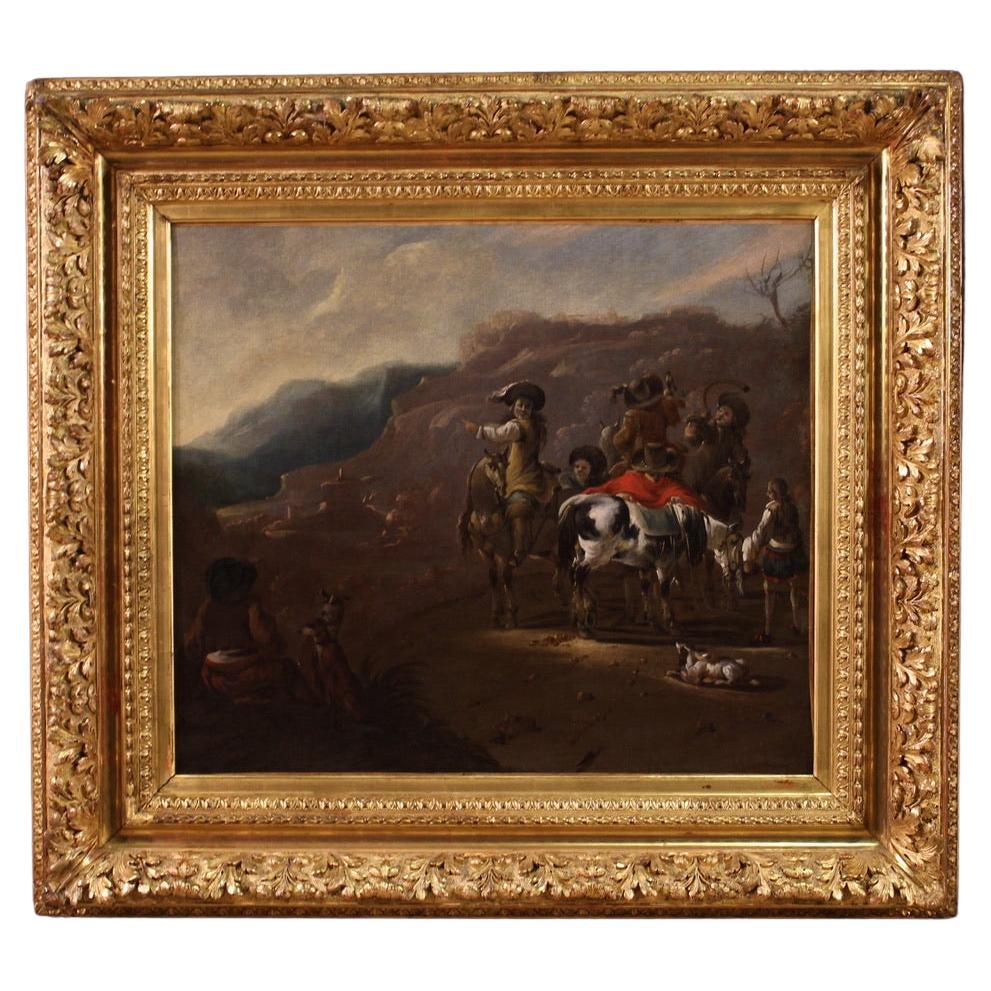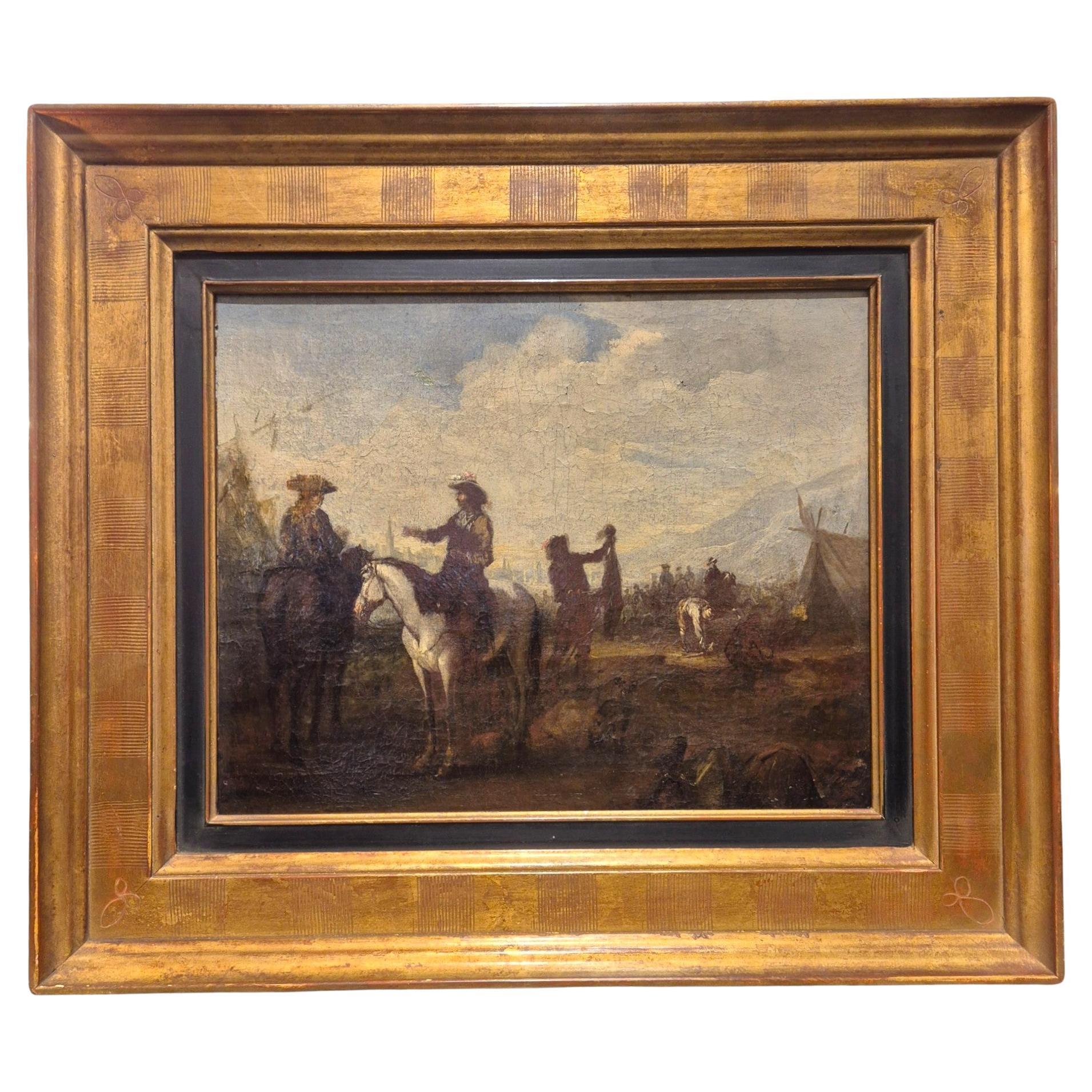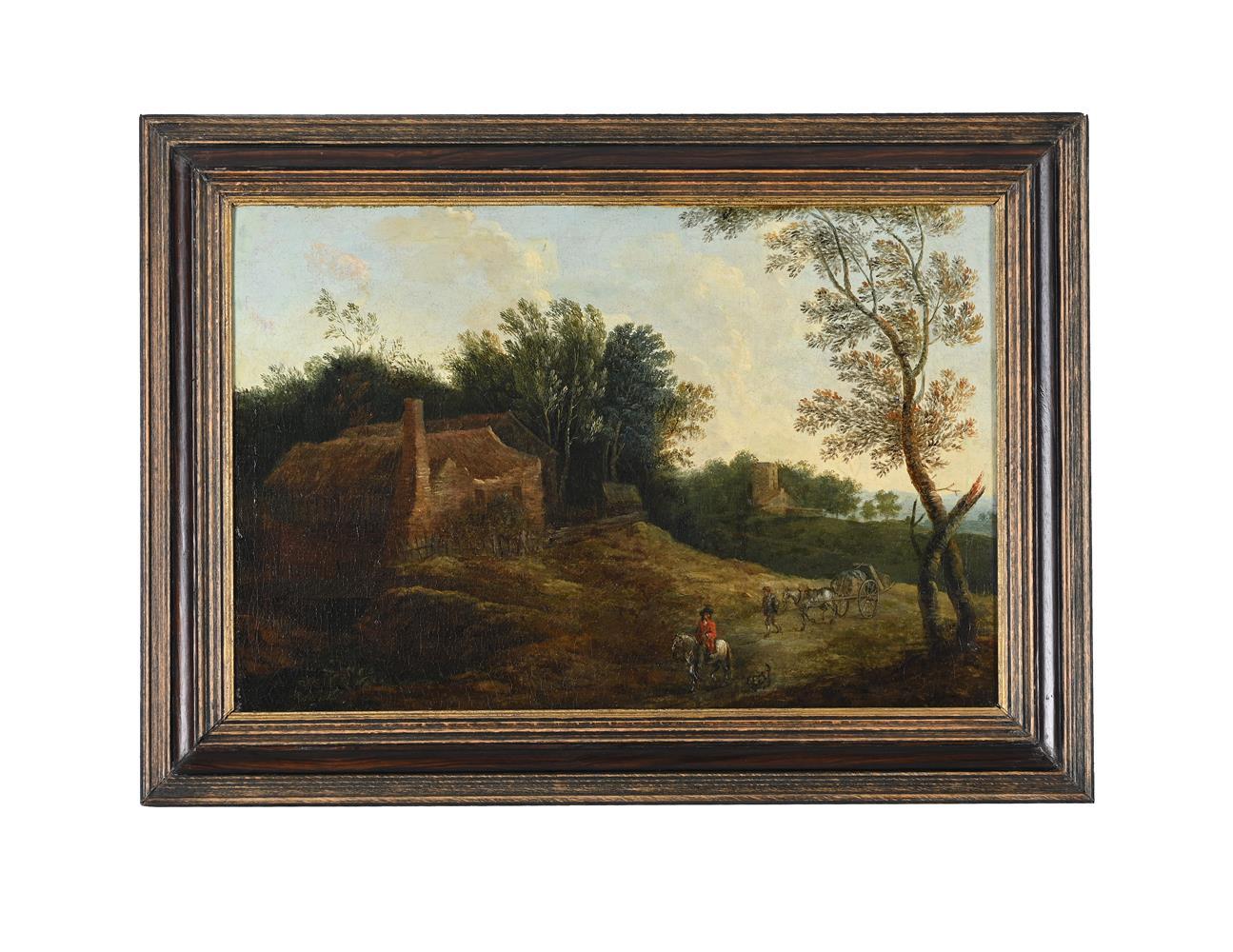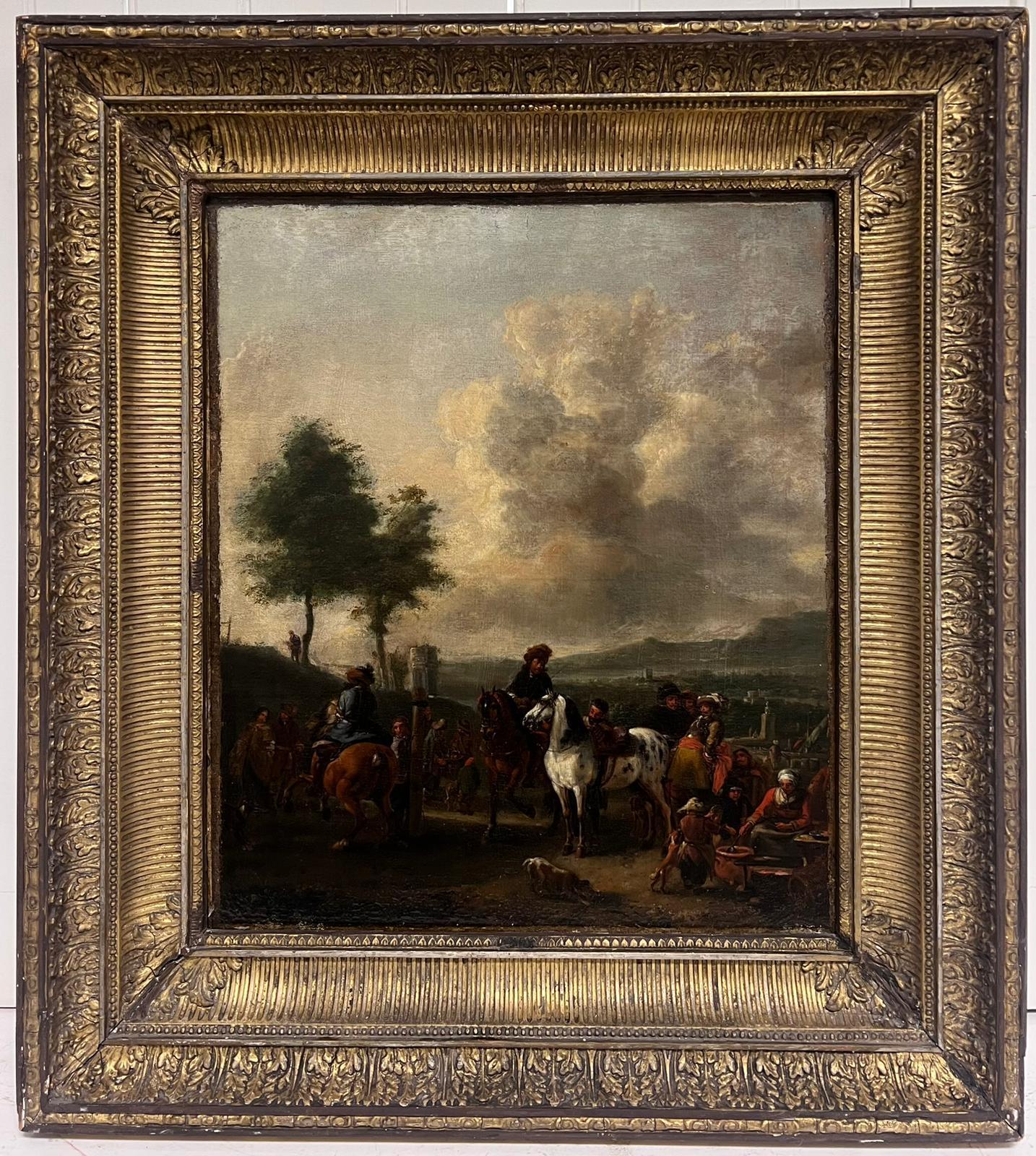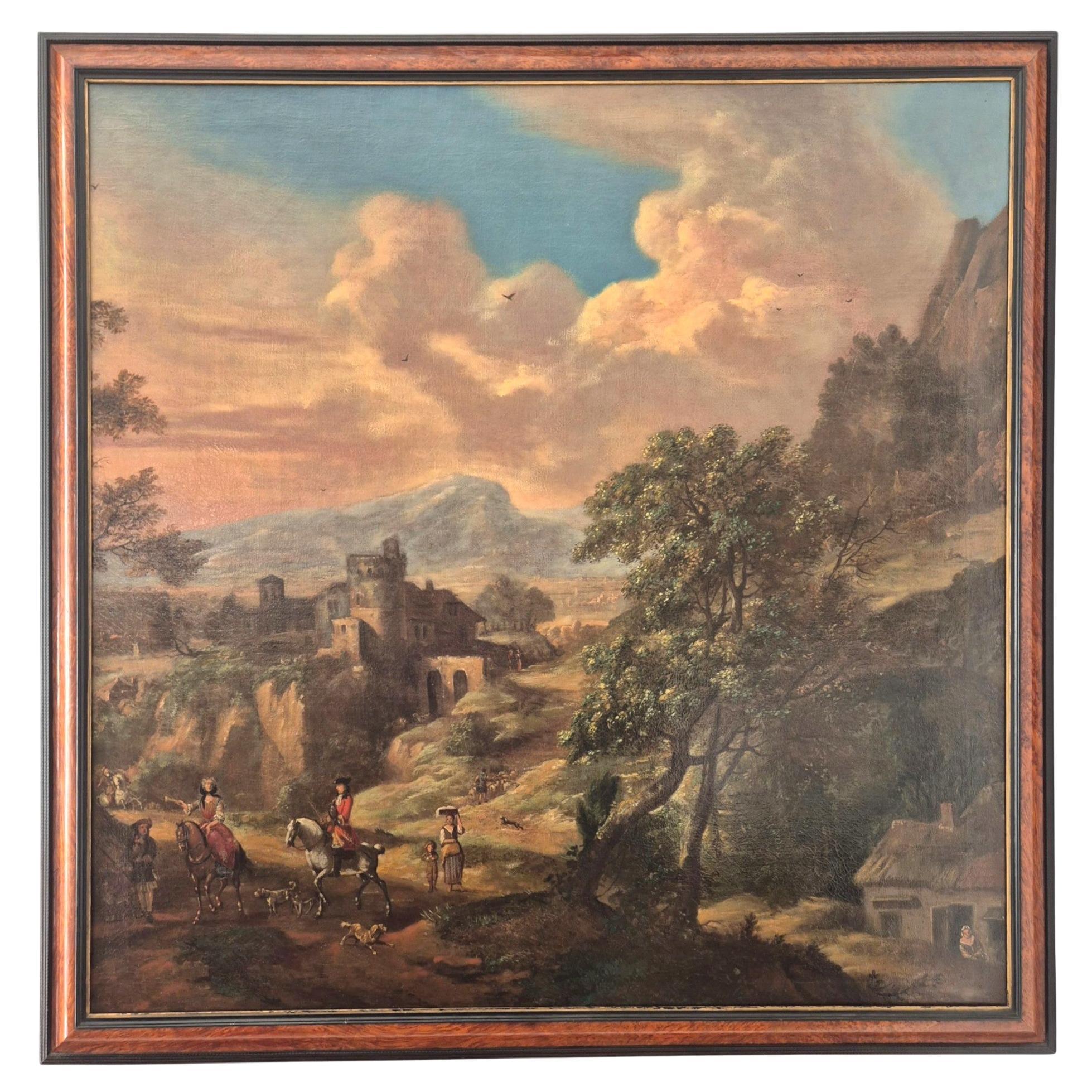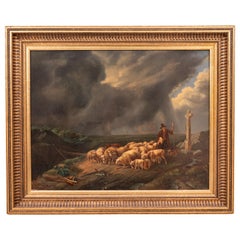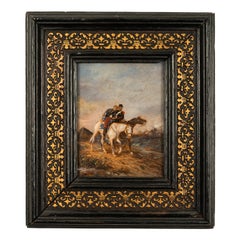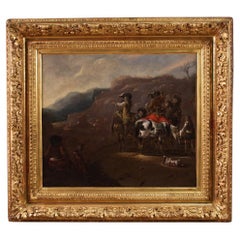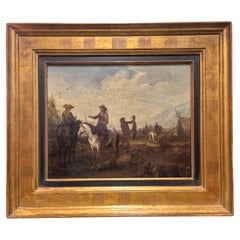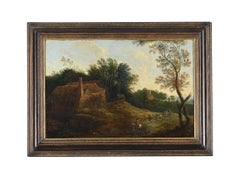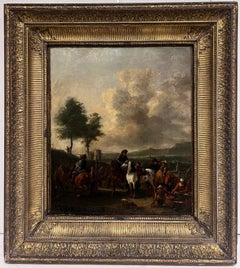Items Similar to Flemish Early 17th Century Old Master Oil on Panel Painting Hunting Scene 1620
Want more images or videos?
Request additional images or videos from the seller
1 of 19
Peter Van LintFlemish Early 17th Century Old Master Oil on Panel Painting Hunting Scene 16201620
1620
$27,500
£20,765.05
€24,091.72
CA$38,646.14
A$43,057.25
CHF 22,477.92
MX$522,772.45
NOK 282,532.84
SEK 267,062.17
DKK 179,841.82
About the Item
A highly important Flemish Old Master oil painting by Peter Van Lint (1609-1690), titled "Preparing for the Hunt", the painting is dated & signed by the artist, 1620. The painting was authenticated in the 1880s by the American artist & Old Master expert, Joseph Foxcroft Cole (1837-1892).
Van Lint was a highly celebrated long lived & prolific artist, he was a contemporary of other famous Baroque artists such as Peter Paul Reubens. This very fine painting depicts a scene of people readying for the hunt, to the foreground is a Lord & Lady dressed in their finery with lurchers and other hunting dogs milling around, whilst grooms ready horses for their riders. The figures gather below the church clock tower, to the background are rolling Hills and above the valley are other stone built buildings.
The verso has the artist's name in his own hand and the date of 1620, there also seems to be a title below this, there is also a late 19th century paper label authenticating the painting as a work by Van Lint. The expert was the artist and Old Master's expert Joseph Foxcroft Cole, who was a significant artist in his own right of the American Barbizon School, in the 1880's Foxcroft Cole valued the painting at $500.
The painting is housed in a period gilded frame, condition is very good indeed, the painting will be accompanied with a certificate of authenticity, the painting came from a considerable private collection of fine 17th and 18th century Old Masters. The painting is accompanied with a Certificate of Authenticy.
Painting at sight without frame 18" x 14"
Pieter van Lint or Peter van Lint (1609–1690) was a talented Flemish Old Master painter, draftsman & designer of tapestries. He excelled in history paintings, genre scenes & portraits in the Flemish Baroque style with some influence of late Renaissance Classicism. He worked in Antwerp & Italy.
He was born in Antwerp where he trained under Artus Wolffort. During his training he frequently visited Antwerp's churches to copy the paintings of his contemporaries such as Peter Paul Rubens as well as those of earlier generations such as Marten de Vos and the Francken brothers.
Van Lint become a master in the Guild of Saint Luke in 1633. In that same year he traveled to Rome where he remained until 1640. In Rome he worked for Cardinal Domenico Ginnasi, Bishop of Ostia, who employed him to decorate the local cathedral. Van Lint also frescoed the Cybo family chapel in the Santa Maria del Popolo with the Legend of the True Cross in 1636–40. In addition to religious commissions, the artist painted numerous small genre scenes in the style of the Bamboccianti; a group of Roman genre painters in the first quarter of the 1600s. He spent time in Paris from 1640 to 1641 where he possibly was in contact with Poussin.
The year after his return to Antwerp in 1642 he married Elisabeth Willemyns, the couple had seven children. When he became widowed in 1679, the artist remarried the following year to Anna Moeren (Moren or Morren).
His pupils included Caerel de las Cuevas, Jan-Baptista Ferrari and Godfried Maes. His son Hendrik Frans van Lint from his second marriage was a celebrated landscape painter in Rome.
His earliest works follow his master Wolffort's style, which was itself indebted to the academic manner of Otto van Veen. During his stay in Rome he made many studies after the antique and developed an interest in classicism, which remained a constant characteristic of his style. At the same time, he tried his hand at the Bamboccianti genre style of painting.
Many of his later works were religious paintings, such as the Marriage of the Virgin (1640) in Antwerp Cathedral, which were in the classicizing style of Wollfort and his Roman examples. Besides larger paintings, he made small-scale devotional paintings, which found a large market in Spain & the Spanish colonies in America. He often completed assignments for leading Antwerp art dealers such as Matthijs Musson and Guillam Forchondt.
In response to the contemporary demand for copies of Rubens' oil sketches, van Lint produced a large number of copies of Rubens' work. Pieter van Lint was together with Abraham Willemsens and Willem van Herp one of the principal producers of such copies for the Antwerp art dealers. Many of these were executed on copper, a material for painting that was highly prized both for durability and its glossy finish in Spain. Four oils on copper works by van Lint are in the collection of the Prado Museum in Madrid, including a copy after Rubens.
An album with travel sketches, including two sketches which are signed 'P.V.L.' in the collection of the Martin von Wagner Museum in Würzburg, which were formerly attributed to Pieter van Laer (the central figure of the Bamboccianti) has now been re-attributed to Pieter van Lint. The album contains sketches, which the artist made of scenes, including of his fellow travelers, during his travels in Italy around 1636. The drawings give a lively idea of the conditions and the manner in which travelers undertook their travels at the time.
Pieter van Lint was also active as a designer of tapestries. Correspondence between the Antwerp trader Hendrik Lenaerts and the Brussels weavers Jan van Leefdael and Gerard van der Strecken dated 1660 shows that van Lint had designed 8 cartoons for a Story of Domitian. A tapestry series dated 1639 on the Story of the Virgin Mary still preserved in the Pottery convent in Bruges is believed to have been made after models by Pieter van Lint. The artist died in Antwerp in 1690.
- Creator:Peter Van Lint
- Creation Year:1620
- Dimensions:Height: 21.75 in (55.25 cm)Width: 26 in (66.04 cm)Depth: 2.5 in (6.35 cm)
- Medium:
- Movement & Style:
- Period:
- Condition:Very good antique condition.
- Gallery Location:Portland, OR
- Reference Number:Seller: BB-110321stDibs: LU1366216190502
About the Seller
5.0
Platinum Seller
Premium sellers with a 4.7+ rating and 24-hour response times
Established in 1990
1stDibs seller since 2020
59 sales on 1stDibs
Typical response time: 1 hour
- ShippingRetrieving quote...Shipping from: Portland, OR
- Return Policy
Authenticity Guarantee
In the unlikely event there’s an issue with an item’s authenticity, contact us within 1 year for a full refund. DetailsMoney-Back Guarantee
If your item is not as described, is damaged in transit, or does not arrive, contact us within 7 days for a full refund. Details24-Hour Cancellation
You have a 24-hour grace period in which to reconsider your purchase, with no questions asked.Vetted Professional Sellers
Our world-class sellers must adhere to strict standards for service and quality, maintaining the integrity of our listings.Price-Match Guarantee
If you find that a seller listed the same item for a lower price elsewhere, we’ll match it.Trusted Global Delivery
Our best-in-class carrier network provides specialized shipping options worldwide, including custom delivery.More From This Seller
View AllAntique Flemish Oil on Panel Francois Backvis Shepherd Sheep Flock Painting 1880
By François Backvis
Located in Portland, OR
A good antique oil on panel landscape painting by the Flemish artist, Francois Backvis (1857-1926).
The painting circa 1880 depicting the parable of the lost sheep from the gospels of Matthew & Luke. The painting shows a stormy landscape with the shepherd and his flock, the shepherd is holding the lost sheep under his arm in front of a large stone crucifix...
Category
Late 19th Century Flemish School Landscape Paintings
Materials
Oil, Panel
Antique Miniature Oil Painting on Panel French Battle Cavalry Horse Scene 1875
Located in Portland, OR
A good antique miniature French School oil on panel painting, a post battle cavalry scene, James Alexander Walker (1831-1898), British, circa 1875.
The painting depicts two French cavalry officers riding through a rural landscape, each on horseback, one is evidently wounded and is being supported by the other. The painting is signed to the verso of the walnut panel it is painted on and titled "Hors de Combat", meaning out of combat due to injury. Walker's auction record for a painting was at Christies London, for more than $191,000 in 2007. The painting is housed in the original ebonized frame with gilded Fleur de Lis decoration, condition is good, unrestored antique condition and ready to hang.
James Alexander-Walker (1831 – 1898), was a British painter of French descent for his battle scenes. He was born in Calcutta, but from 1871 he lived in Paris where he made historical scenes of soldiers. He died in Paris...
Category
1870s French School Figurative Paintings
Materials
Oil, Panel
19th century French Barbizon School Painting oil on Canvas Landscape circa 1840
Located in Portland, OR
19th century French Barbizon School Painting, oil on canvas signed "Marin", Circa 1840. A very attractive bucolic, pastoral landsacpe scene with sheep grazing on the banks of a lake ...
Category
Early 19th Century Barbizon School Landscape Paintings
Materials
Canvas, Oil
Antique 19th Century Neoclassical Bacchanal Painting Dancing of the Nymphs 1850
By Cornelius van Poelenburgh
Located in Portland, OR
A good antique Dutch/Flemish oil on panel painting, after Cornelis van Poelenburgh, circa 1850.
The painting portrays a number of nude and par...
Category
Mid-19th Century Old Masters Figurative Paintings
Materials
Oil, Panel
Italian 17th Century Baroque Oil on Canvas Painting Coastal Landscape Fishermen
By Salvator Rosa
Located in Portland, OR
Italian 17th Century oil on canvas Baroque painting, attributed to Salvator Rosa (1615-1673), a coastal landscape scene with fishermen, circa 1650.
The painting depicts a rocky coast...
Category
1650s Italian School Figurative Paintings
Materials
Oil, Canvas
Antique British Oil Painting Seascape Coast Scene Shipwreck Landscape Horses
Located in Portland, OR
A very good antique 19th century British oil on canvas painting, seascape coastal scene by Samuel C. Bird, circa 1870.
This very attractive oil on canvas painting depicts a coastal s...
Category
1870s English School Landscape Paintings
Materials
Oil, Canvas
You May Also Like
17th Century Oil on Canvas Flemish Antique Landscape Painting Hunting Scene 1660
Located in Vicoforte, Piedmont
Flemish school of the mid-17th century. Oil on canvas artwork depicting a splendid hunting scene. On the right is a group of characters dressed in the 17th-century fashion of Norther...
Category
Antique 1660s Dutch Paintings
Materials
Canvas
$10,094
Free Shipping
Court hunting scene, Flemish school of the late 17th century, Oil on canvas
Located in NICE, FR
This richly narrated painting probably takes us back to a hunting scene at court in the late 17th or early 18th century.
In the left foreground, two men on horseback are engaged in ...
Category
Antique 1690s Dutch Louis XIV Paintings
Materials
Canvas
Fine 17th Century Flemish Old Master Oil Painting Travellers Country Landscape
Located in Cirencester, Gloucestershire
Travellers in a Country Landscape
circle of Jacques d'Arthois (Flemish 1613-1686)
oil on canvas, framed
frame: 13.5 x 18.5 inches
canvas: 11 x 16 inches
provenance: private collectio...
Category
17th Century Old Masters Landscape Paintings
Materials
Oil
$2,363 Sale Price
30% Off
Fine 17th Century Dutch Old Master Oil Military Encampment Figures on Horseback
By Philips Wouwerman
Located in Cirencester, Gloucestershire
The Military Encampment
Dutch School, 17th century
circle of Philips Wouwermans (Dutch 1619-1668)
oil painting on canvas, in 18th century gilt frame
canvas measures: 19.5 x 17 inches...
Category
17th Century Old Masters Landscape Paintings
Materials
Oil, Canvas
$3,809 Sale Price
30% Off
Landscape Hunt Miel Paint 17th Century Oil on canvas Flemish Old master
Located in Riva del Garda, IT
Jan Miel (Antwerp, 1599 - Turin, 1663)
attributable
Return from the Hunt
Oil on canvas (51 x 66 cm Framed 74 x 89 cm)
Tous les détails sont disponibles sur le LIEN suivant
The wor...
Category
17th Century Old Masters Paintings
Materials
Oil
$5,804 Sale Price
20% Off
Hunting scene, 18th century, Oil on canvas
Located in NICE, FR
This narrative-rich 18th-century painting most likely transports us to a lively hunting scene featuring noble men and women, killers and a horde of dogs hunting game.
This painting ...
Category
Antique 1780s French Louis XVI Paintings
Materials
Canvas
More Ways To Browse
Same Old
Flemish Masters
Four Panel Painting
Old Masters Renaissance Paintings
Spain Old Masters
Antique Hunting Scene
Church Panels
Old Master Flemish
Antique Copper Painting
Renaissance 18th Century Painting
17th Century Flemish Painting
Roman Paul
Flemish Portrait Painting
Rolling Stones Painting
Copper Art Panels
Artist Wagner
17th Century Religious Paintings
17th And 18th Century Oil Paintings
